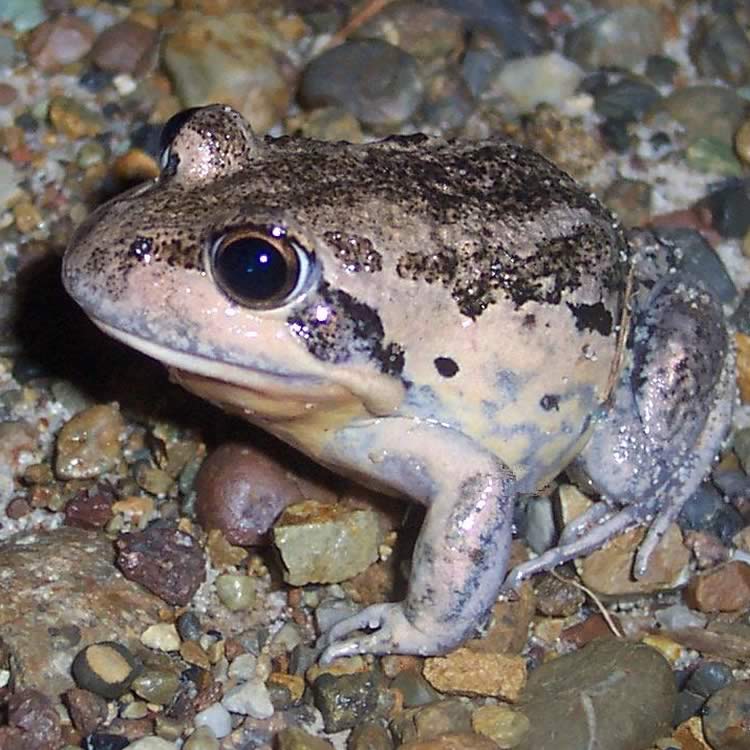Eastern banjo frog

Community type
Habitat type
Tidal wetlands and macrophytes beds
This frog is more likely to be heard than seen, and is recognisable by its distinctive 'bonk' call, likened to the sound of a banjo string being plucked. This is the basis for their other common name the ‘pobble bonk’ frog.It feeds at night on insects and insect larvae and lives in burrows in the ground, which it digs with its hind legs and proceeds in backwards. After rain they come out in large numbers. Males can travel up to 1km to reach breeding sites. Their life-cycle is extended in cooler climates, with a tadpole stage of up to 15 months, from 4 months in warmer climates. This is because metamorphosis speeds up in the warmth. There are five species of Eastern banjo frog in Australia and though common, they are frequently seen as an indicator of the health of wetland areas. Other frogs occurring in Murphy’s Flat wetlands include the Spotted Marsh Frog (Limnodynastes tasmaniensis), Brown Tree Frog (Litoria ewingii), and Brown Froglet (Crinia signifera).
Listen to their calls!
